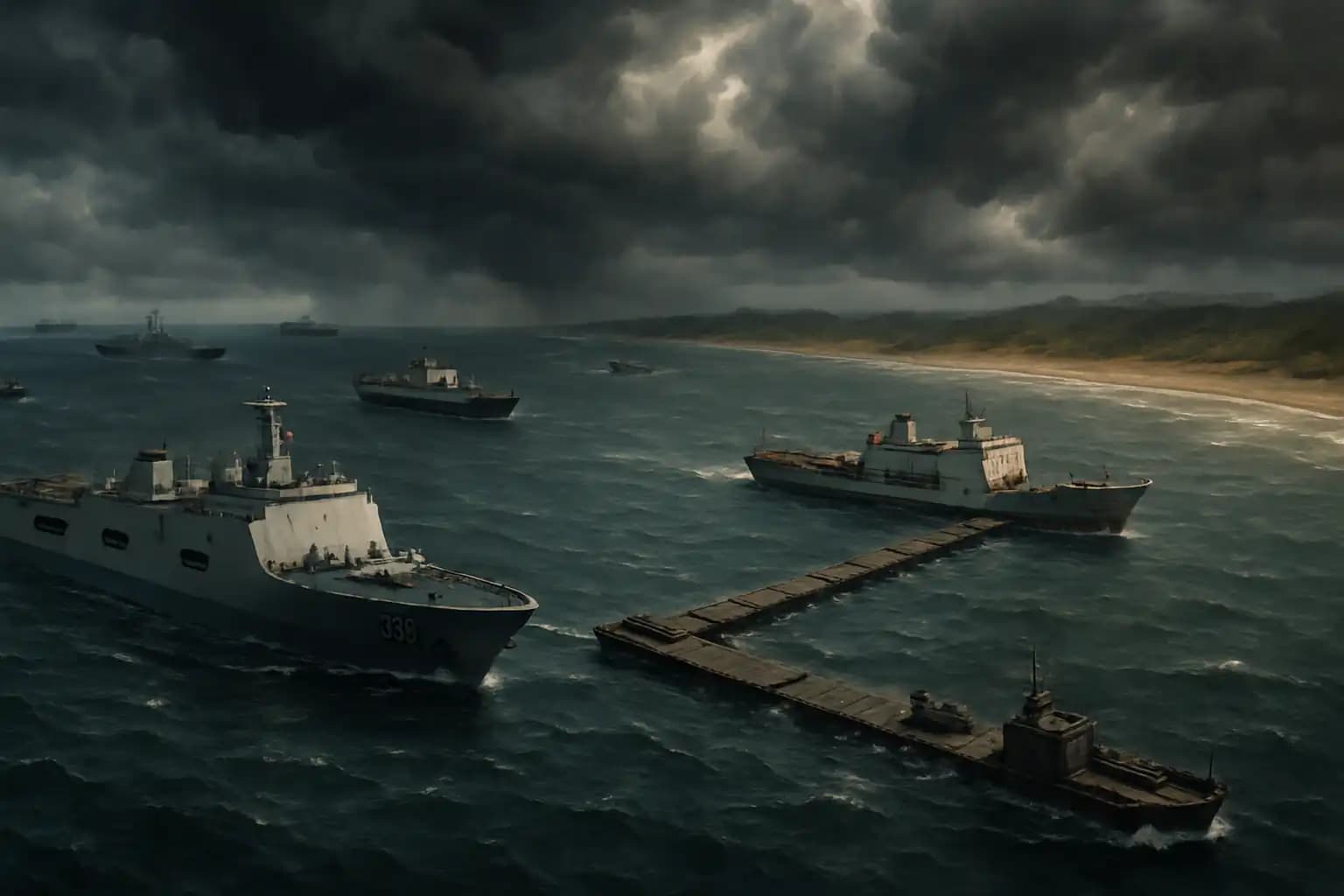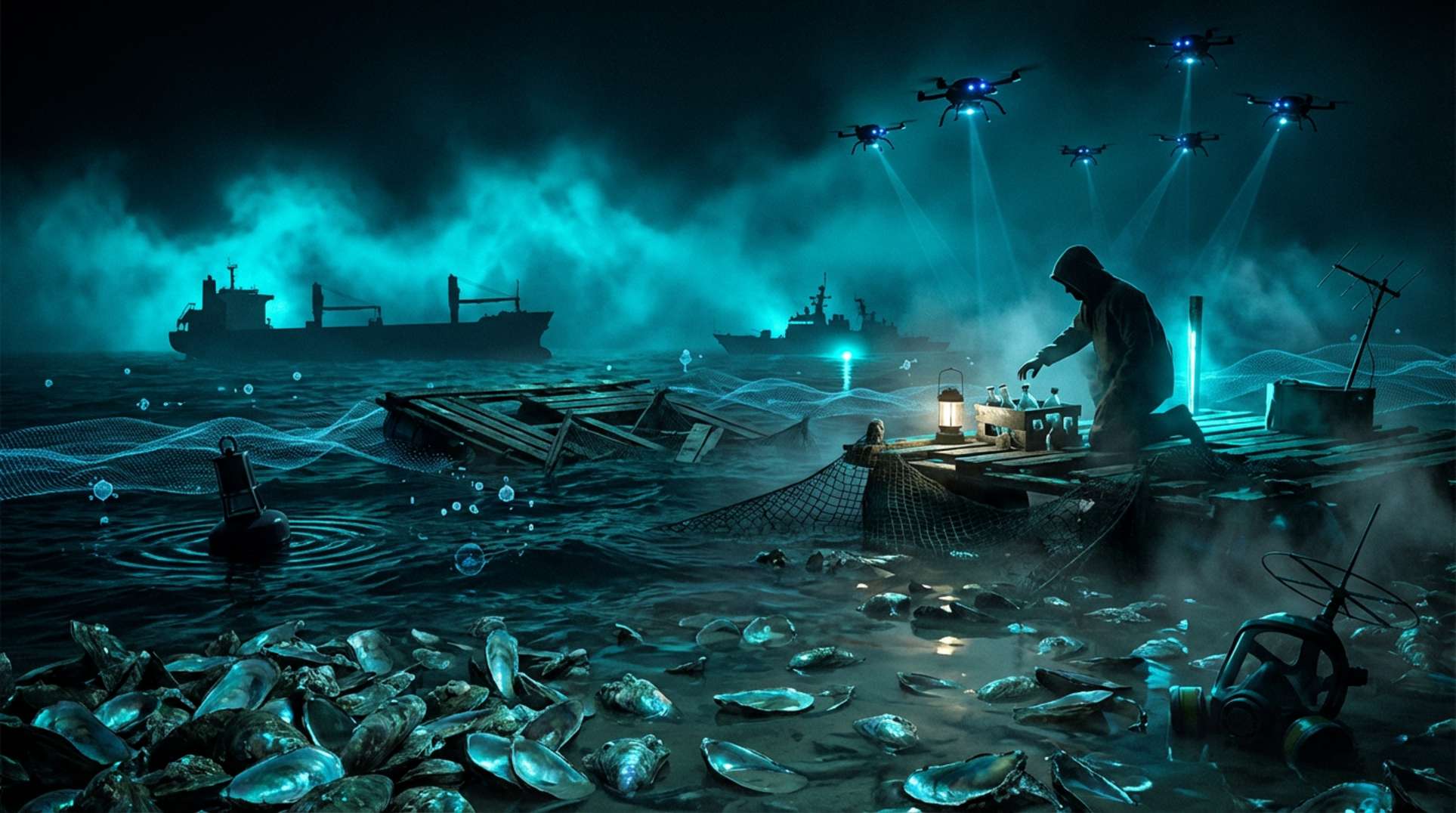Tension swirls in the Pacific, and it’s not just bluster. China’s rapid production of amphibious assault ships and a shadow fleet of militarized civilian vessels reveal a chilling reality: an actual capability for D-Day-style landings on Taiwan’s shores. The once-theoretical invasion scenario now features more hardware and practice runs than ever, sending strategic planners in Taipei, Washington, and Tokyo into overdrive. Satellite footage and media analysis, detailed in this report on PLA’s civilian vessel drills, elevate this potential crisis from war games to public consciousness.
China’s amphibious expansion significantly alters the probabilities. The People’s Liberation Army’s (PLA) combined-arms amphibious warfare capabilities now include mobile bridging ships that form floating piers. These piers enable troops, armor, and logistics support to offload in hours, not days. As a recent Naval News exposé indicates, China’s new bridging vessels and improved landing craft could unleash a swift, overwhelming beach assault—literally paving the way for rapid island takeovers.
Amphibious Warfare: From Concept to Modern Military Reality
Amphibious warfare ranks among the most technically demanding military operations, blending naval, aerial, and land logistics in a delicate dance of deception and force. Unlike historic beach assaults—exemplified by Normandy—today’s versions deploy multi-role vessels that transport tanks, missile batteries, and large troop formations. China’s landing ships and civilian roll-on/roll-off ferries, utilized as mock invasion transports in recent PLA landing exercises, excel at speed and scalability, enhanced by bridge platforms showcased in recent drills along the Chinese coast.
This technological leap correlates with recent outages, cyber vulnerabilities, and hybrid warfare scenarios discussed in this exposé on China’s cyber operations. If a Taiwan campaign begins, it will likely consist of massive digital and electromagnetic attacks, alongside physical land forces. Military analysts now worry about civilian ships “going dark” to conceal assault forces, while combat drones swarm the strait. This scenario creates a perfect storm for amphibious chaos.
Civilian Fleets: The Secret Ingredient in Taiwan Contingency Plans
Western militaries increasingly fret over China’s mobilization of its Maritime Militia: hundreds of commercial ferry, fishing, and cargo vessels, rapidly outfitted with military systems in joint exercises. These vessels expand the PLA’s sealift capacity beyond traditional logistics, allowing an initial amphibious force to swell into an unstoppable wave. As detailed in scenarios regarding large-scale warfare, civilian assets provide plausible deniability, flexibility, and critical logistics support for sustaining a beachhead—essential to China’s aim of seizing and holding Taiwanese ports.
Moreover, the Maritime Militia’s dual-use design complicates intelligence assessments, raising difficult questions for U.S. planners: Is a ferry transporting tourists or tank battalions? With Taiwan’s defenders potentially facing asymmetric attacks, the unpredictable presence of “gray-zone” ships could hinder the island’s early warning systems. Hybrid tactics have never been so streamlined.
China’s Amphibious Exercises: Proving Grounds for D-Day in the Pacific
The PLA rehearses extensively. Major amphibious exercises, like those described at Asia Times, where landing ships and marines simulated live invasions, deliver a clear message: China’s D-Day plans are public knowledge. These drills involve transport ships, hovercraft, engineering vehicles, and numerous “civilian” support craft. Each year, the complexity and scale of these maneuvers grow, with units conducting multi-beach landings, rapid port seizures, and inland armored advances—straight out of World War II playbooks, yet with a modern twist.
Taiwan’s allies observe these movements closely, especially given China’s proven logistics proficiency, as detailed in crisis anomaly reports. American and Japanese planners analyze how long Taipei could withstand such a wave, echoing assessments of past and present flashpoints. The stakes rise with every rehearsal visible from space.
Wargames, Risks, and the Path Forward
Are these amphibious drills and new ships hype or warnings of what’s to come? Some experts suggest, as detailed in a diplomatic assessment, that China’s logistics and command integration still lag behind U.S. and allied forces. Yet, dismissing Beijing’s capabilities risks a fatal mistake. Satellite surveillance, cyber-espionage, and “cognitive warfare” form staples of the PLA’s strategy. Nations worldwide scrutinize these developments for their own readiness, and so should curious readers—by following reporting from sources like Unexplained.co.
One certainty persists: the next amphibious invasion, if it happens, will not merely take its place in history—it could shift the balance of power in the Pacific and beyond. The clock ticks, warships amass, and the world watches the Taiwan Strait—awaiting the moment Beijing’s new ships stop training and begin crossing for real.




